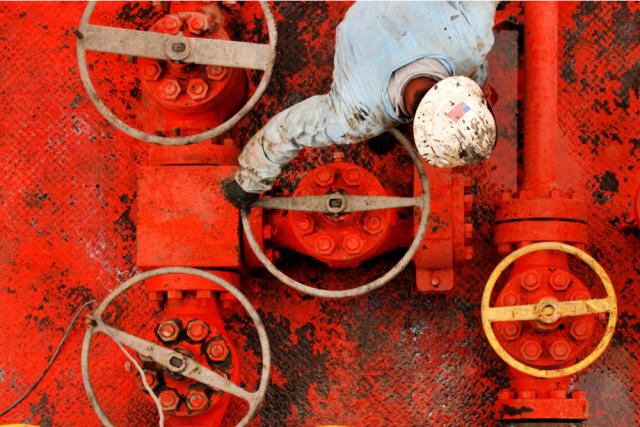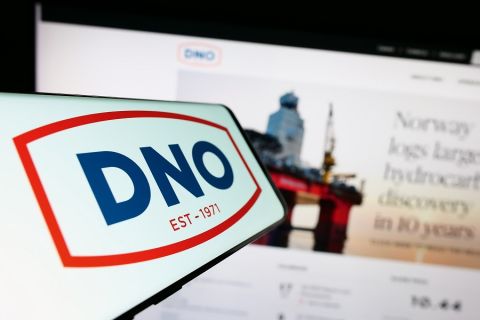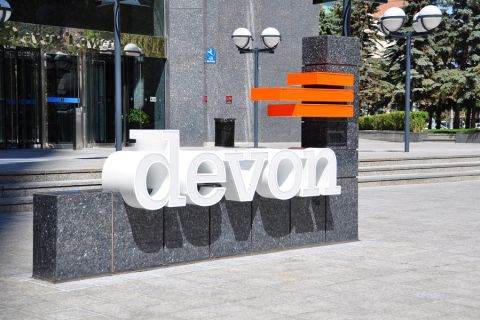
Stripping emissions from the production, transportation and burning of natural gas is vital to the industry’s future. (Source: Hart Energy)
The natural gas industry has spent the past decade pitching its product as the cleanest fossil fuel and a necessary bridge from the coal-powered past to a renewable future.
But the fuel’s prospects have been called into doubt as energy transition gathers pace, casting a shadow over an industry that has pumped tens of billions of dollars into projects to produce and ship natural gas worldwide.
Climate politics have tilted against natural gas. Japan, South Korea, the EU and the U.S. have pledged to be net carbon-free by 2050 and China by 2060. These are mainstay markets that account for more than half of global natural gas consumption.
At the same time, a rapid drop in wind, solar and battery costs has enabled an accelerated rollout of renewables, which threatens to erode gas’s market share. Even in the U.S., where cheap shale gas continues to flow, the amount of renewable generation capacity built between 2020 to 2024 will be three times that of gas capacity, according to the Energy Information Administration, a federal government forecaster.
This sudden pressure on the industry has led to a realization that its “cleaner-than-coal” pitch is no longer enough. Its future now depends on stripping emissions from the production, transportation and ultimate burning of its gas.
“The debate in the industry is about what needs to be done to ensure that gas remains financeable,” says Massimo Di Odoardo, vice-president of gas and LNG research at Wood Mackenzie, a consultancy. “Reducing scope one and two emissions [from direct operations and purchased power] is one thing players in the industry can do. That competition has really just started.”
RELATED:
Shale Gas Producer EQT Backs Biden’s Methane Crackdown
Right now, analysts believe the most pressing issue for companies in the sector is controlling the high emissions of methane from wells, pipelines and other parts of the natural gas chain.
Natural gas emits about half as much CO₂ as coal when it is burnt, but environmentalists argue that the sector’s green credentials are undermined by emissions of methane, which has 80 times the warming potential of CO₂.
Those emissions can come from venting methane at the well because of a lack of equipment to transport the fuel, or from leaks at pipelines and storage sites.
“Many are starting to do something about it as they realise methane emissions put their licence to operate and their very business at risk,” says Antoine Halff, chief analyst at Kayrros, a group that uses satellites to track methane emissions.
The International Energy Agency reckons that about 70 million tonnes of methane were leaked into the atmosphere in 2020, roughly equivalent to the annual energy-related CO₂ emissions of the EU. Its methane tracker report this year said it was in companies’ “strong interest” to rein in methane emissions, as buyers would be looking to source the natural gas with the lowest emissions.
“Aside from the environmental gains, oil and gas operations with lower emissions intensities are increasingly likely to enjoy a commercial advantage,” the report concluded.
Methane leaks in 2020 were roughly equivalent to the annual energy-related CO₂ emissions of the EU
The LNG business, which has put billions of dollars into new plants to chill natural gas to enable its transport by sea, has also set out to confront the threat.
Vitol, the commodities trader, launched a Green LNG product in March, which it says will allow buyers to purchase offsets to mitigate the emissions generated from initial exploration through to delivery of the cargo.
Royal Dutch Shell Plc, the energy company, used a similar offset scheme to claim that an LNG cargo it received in Wales in March was “carbon neutral,” although critics argue that offset markets are both hard to verify and open to greenwashing.
NextDecade Corp., a U.S. LNG developer, revealed plans in March to capture and store carbon emitted by its proposed Rio Grande LNG plant on the U.S. Gulf coast. This would be the first LNG plant in the U.S. with carbon capture and storage (CCS) capability, which the company said would slash its emissions by more than 90%. A U.S. federal tax credit for new CCS projects will help offset the added cost, the company says.
“There’s no question our customers are increasingly focused on buying low carbon or net-zero LNG cargoes,” says Matt Schatzman, CEO of NextDecade, who hopes to give final approval to the project this year.
RELATED:
Occidental to Develop CO2 Sequestration Hub for South Texas LNG Project
Wood Mackenzie’s Di Odoardo argues that, with CCS and other mitigation efforts, natural gas could maintain demand even as emissions are cut in line with targets in the Paris Agreement.
That demand would largely come from Asia, where gas plus CCS could still be the alternative to coal, offsetting declines in Europe and to a lesser degree the U.S.
However, at the same time, the prospects for gas in Europe could be bolstered by a move in Brussels to classify gas as a partially sustainable technology under its green labelling system for investors.
It would be “a business that can still spin a lot of money”, says Di Odoardo. “A lot has to happen before we get there.”
Recommended Reading
DXP Enterprises Buys Water Service Company Kappe Associates
2024-02-06 - DXP Enterprise’s purchase of Kappe, a water and wastewater company, adds scale to DXP’s national water management profile.
ARM Energy Sells Minority Stake in Natgas Marketer to Tokyo Gas
2024-02-06 - Tokyo Gas America Ltd. purchased a stake in the new firm, ARM Energy Trading LLC, one of the largest private physical gas marketers in North America.
California Resources Corp., Aera Energy to Combine in $2.1B Merger
2024-02-07 - The announced combination between California Resources and Aera Energy comes one year after Exxon and Shell closed the sale of Aera to a German asset manager for $4 billion.
DNO Acquires Arran Field Stake, Continuing North Sea Expansion
2024-02-06 - DNO will pay $70 million for Arran Field interests held by ONE-Dyas, and up to $5 million in contingency payments if certain operational targets are met.
Report: Devon Energy Targeting Bakken E&P Enerplus for Acquisition
2024-02-08 - The acquisition of Enerplus by Devon would more than double the company’s third-quarter 2023 Williston Basin production.





